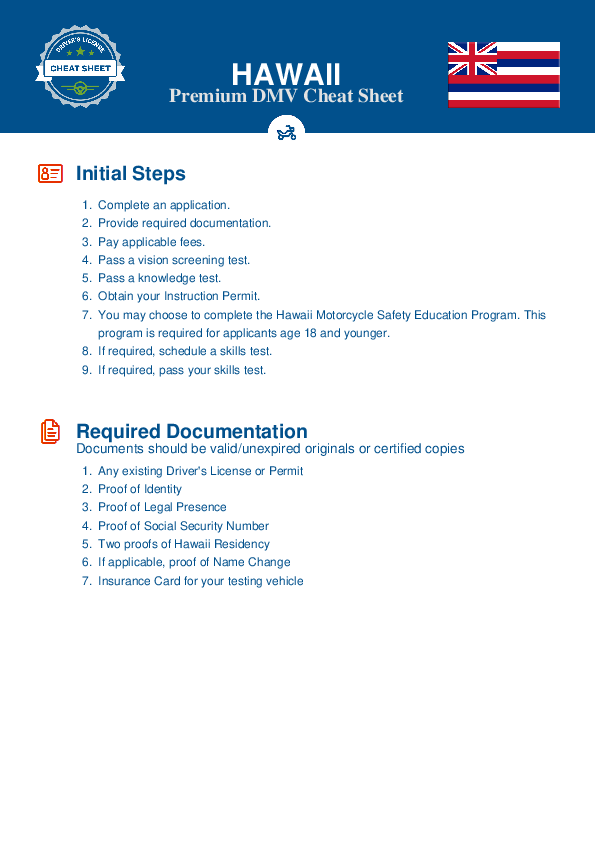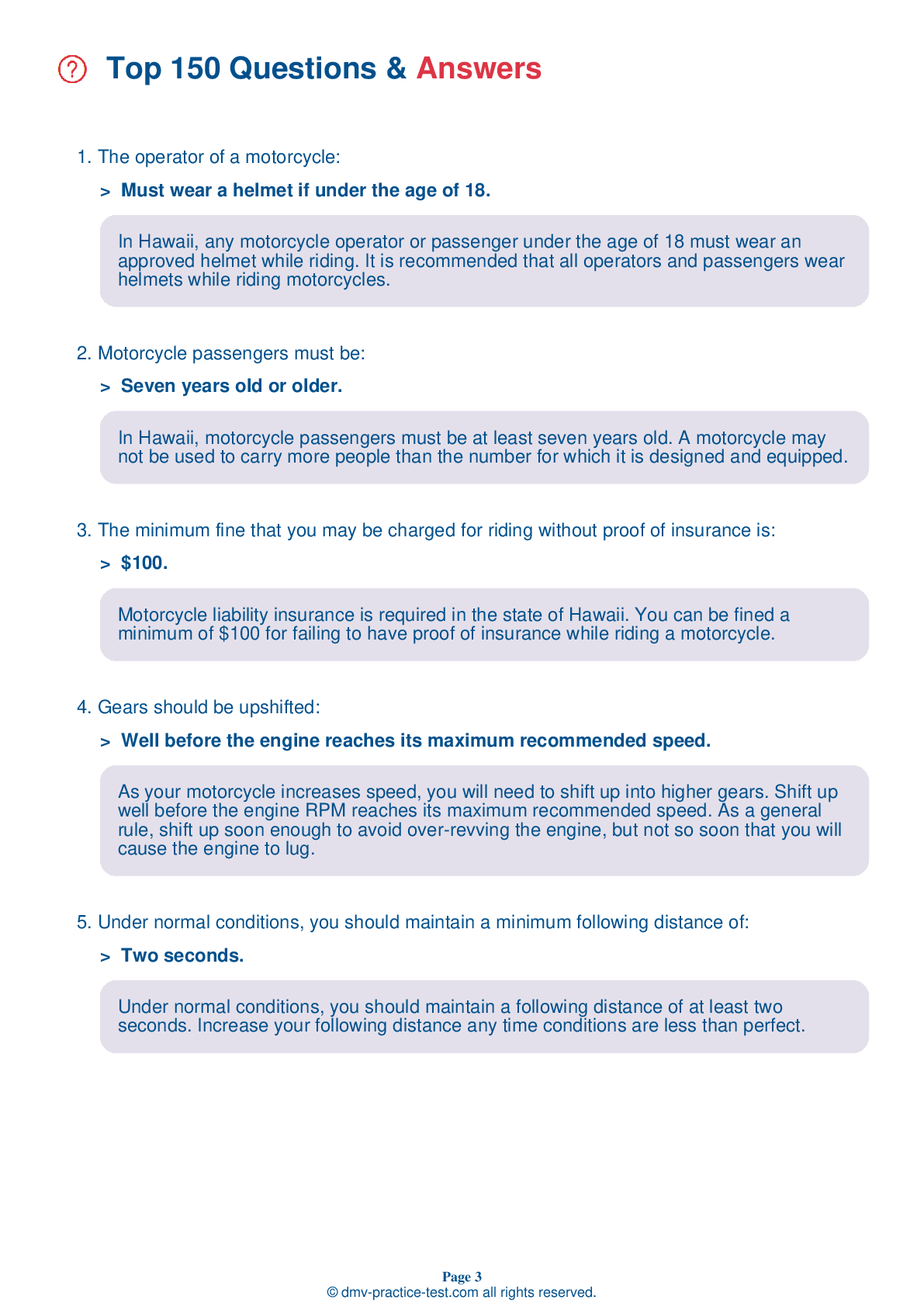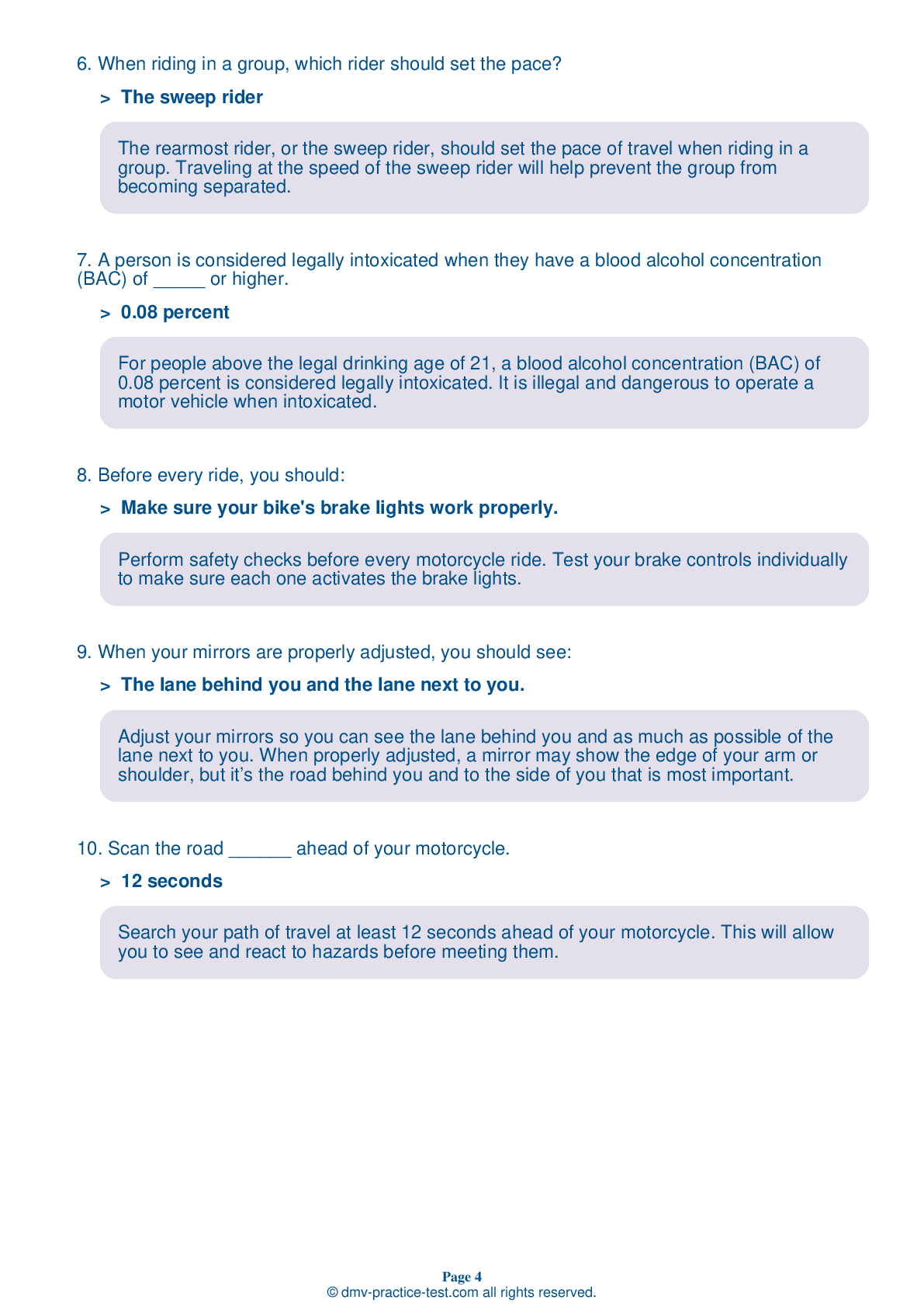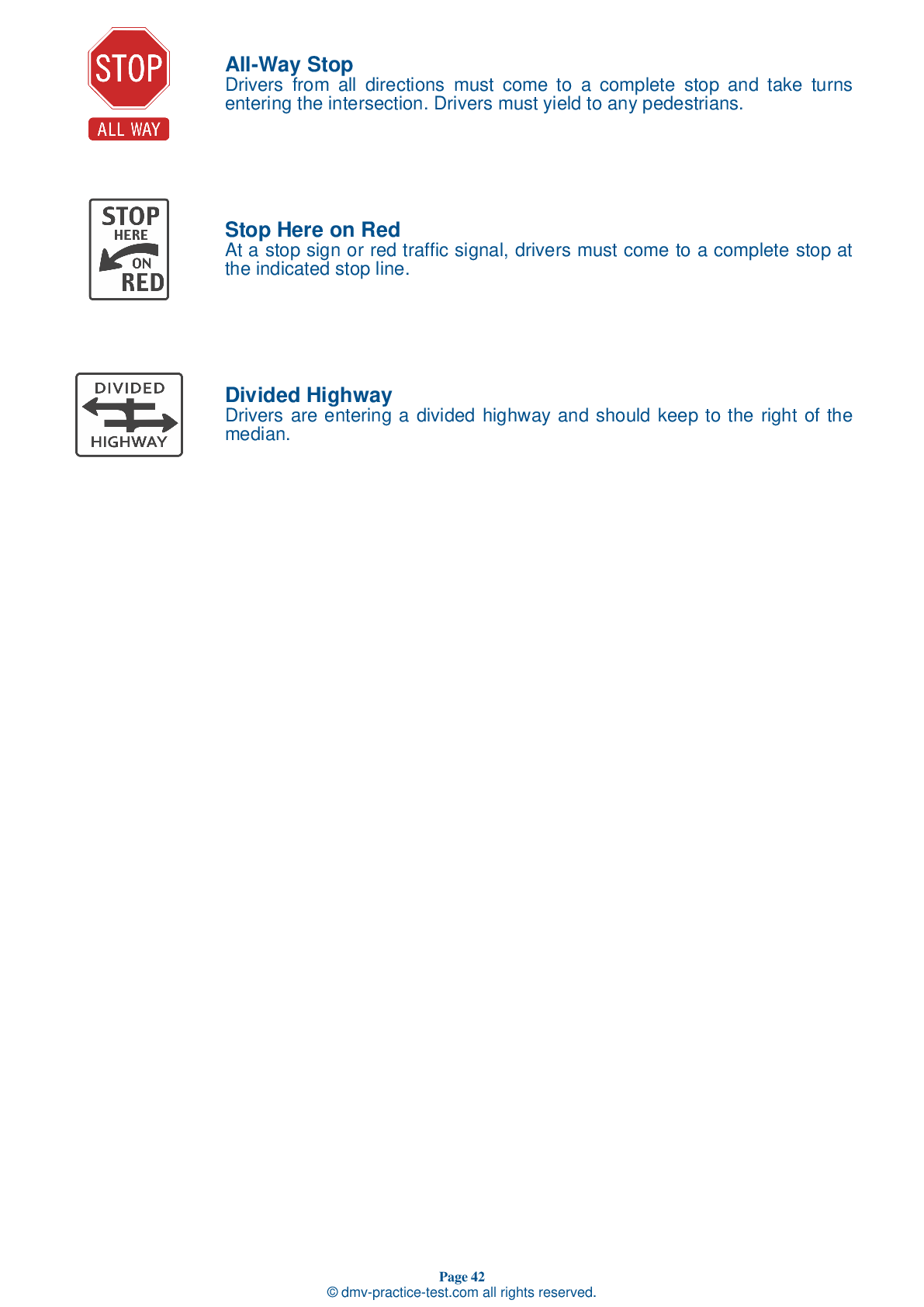Motorcycle Test | License HI 2025 | FREE Online Practice! #4 Page 2 of 4
Take this FREE motorcycle test (license in HI 2025) to check your knowledge of the road rules. To improve your results, download a motorcycle handbook online, study theory, and practice for free on our website. Still worried about how to get a motorcycle license in Hawaii in 2025? Check our website for more sample tests, train as much as possible, and boost your grades!
7 . When carrying a passenger, you should:
When transporting a passenger, you should be sure that you have a seat that is large enough to carry two people without crowding. You should not sit any farther forward than you usually do.
8 . Linked and integrated braking systems:
Linked braking systems apply both brakes when the rider applies either one. An integrated braking system is a variant of this in which partial front braking is applied any time the rear brake is activated. These braking systems ensure that both brakes are used each time the rider slows or stops.
9 . Making eye contact with other drivers:
You should never take eye contact as a guarantee that a driver will properly yield to you. It is not uncommon for drivers to look directly at a motorcyclist but fail to register that they are there.
10 . When turning a three-wheeled motorcycle, you should:
When entering a turn on a three-wheeled motorcycle, you should decrease your speed and slightly lean your upper body in the direction that you intend to turn. Steer your front wheel toward the turn and accelerate gradually as you exit the curve.
11 . Motorcycle passengers must be:
In Hawaii, motorcycle passengers must be at least seven years old. A motorcycle may not be used to carry more people than the number for which it is designed and equipped.
12 . Maintaining a space cushion between your motorcycle and its surroundings is important because it:
The only way to be sure you will have enough time to react to mistakes made by other drivers is to leave plenty of space between you and the vehicles around you.
See the exact questions that will be on the 2025 Hawaii DMV exam.
99.2% of people who use the cheat sheet pass the FIRST TIME
Jeneen was tired of paying $5/gallon. She got herself a scooter that required the motorcycle license. She studyed the motorcycle test cheat sheet and passed her test the next day!
Christopher tells us how he knew nothing prior to obtaining the motorcycle study guide, and he only got one question wrong because he clicked on the wrong answer by mistake.



